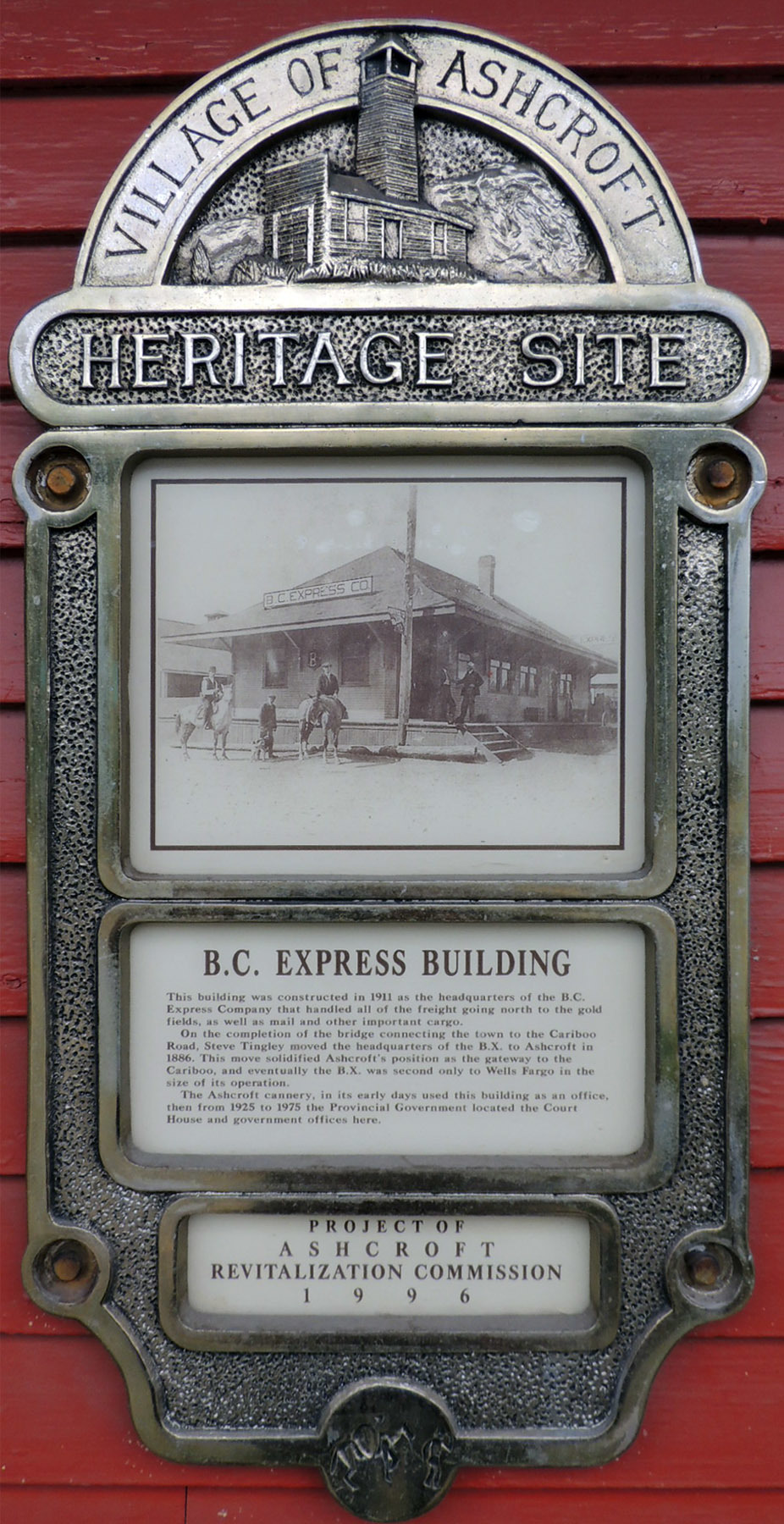
B.C. EXPRESS BUILDING
This building was constructed in 1911 as the headquarters of the B.C. Express Company that handled all of the freight going north to the gold fields, as well as mail and other important cargo. On the completion of the bridge connecting the town to the Cariboo Road, Steve Tingley moved the headquarters of the B.X. to Ashcroft in 1886. This move solidified Ashcroft's position as the gateway to the Cariboo, and eventually the B.X. was second only to Wells Fargo in the size of its operation. The Ashcroft cannery, in its early days used this building as an office, then from 1925 to 1975 the Provincial Government located the Court House and government offices here.
Project of Ashcroft
Revitalization Project
1996
The plaque is located on the side facing Railway Avenue. Please note that this is a private residence. This is a grand old building though renovated over the years, it retains much of its former charm. To learn more about Ashcroft visit Heritage Park Place just across Railway Avenue.
BX Company
In 1858 the lure of gold brought a flood of hopeful seekers into the interior of B.C. This intrusion of men up into the
tributaries of the Fraser River also brought the dilemma of how to transport supplies in and carry gold out. In 1864
Francis J. Barnard, was awarded the government contract to provide this service from Yale to Barkerville. A transportation mode, which originally started by foot and packhorse, progressed to stage coaches, and sleighs and then grew into an organized transportation company in Western Canada, the renowned B.C. Express, or BX.
Some 20 years later with the completion of the CPR, Ashcroft became the strategic spot to move goods from and it was here that new BX owner Steve Tingley set up headquarters. At this time the main stage line extended from Ashcroft to Barkerville, a distance of 280 miles. Routes branched off from the main road to include the settlements of Lillooet, Alkali Lake, Alexis Creek, Harpers
Camp and Keithley Creek. Stage fare from Ashcroft to Barkerville was $42.40 in the winter and $37.50 in the summer. Rain or snow, the mail was expected to be delivered on time and the BX kept a rigid schedule. The way stations were about 18 miles apart along the road, with fresh horses waiting at each. The Company prided itself on using the finest horses and the best of drivers.
In 1897 Tingley lost the contract to haul mail to a group of Toronto Businessmen. This new company bought out the BX, including stages, harnesses and horses. The 1910 addition of two sternwheelers on the Upper Fraser Rivers and the completion of the railway to Fort George, gave the BX Company’s network of stages claim to the longest route in North America. That same year improvements made to the Cariboo road allowed for automobile
traffic. The B.C. Express Co. accordingly purchased a fleet of “Winston Sixes” to adapt to the passage of the stage
coach travel.
This addition of vehicles called for a new headquarters to be built. In 1911 a cluster of new buildings were erected on 6th and Railway; these included an office, blacksmith shop, carpenter’s shop, workshop and up to date garage. The B.C. Express Company remained in business until 1914, just three years after completion of its new buildings.
The BX Company’s history spanned over 50 years. It weathered floods and snow and the occasional hold up. It’s red and yellow coaches have provided service to dukes and princesses, judges, politicians, artists, poets, wealthy business men and the everyday people of the Cariboo.
Source:
Explore Gold Country